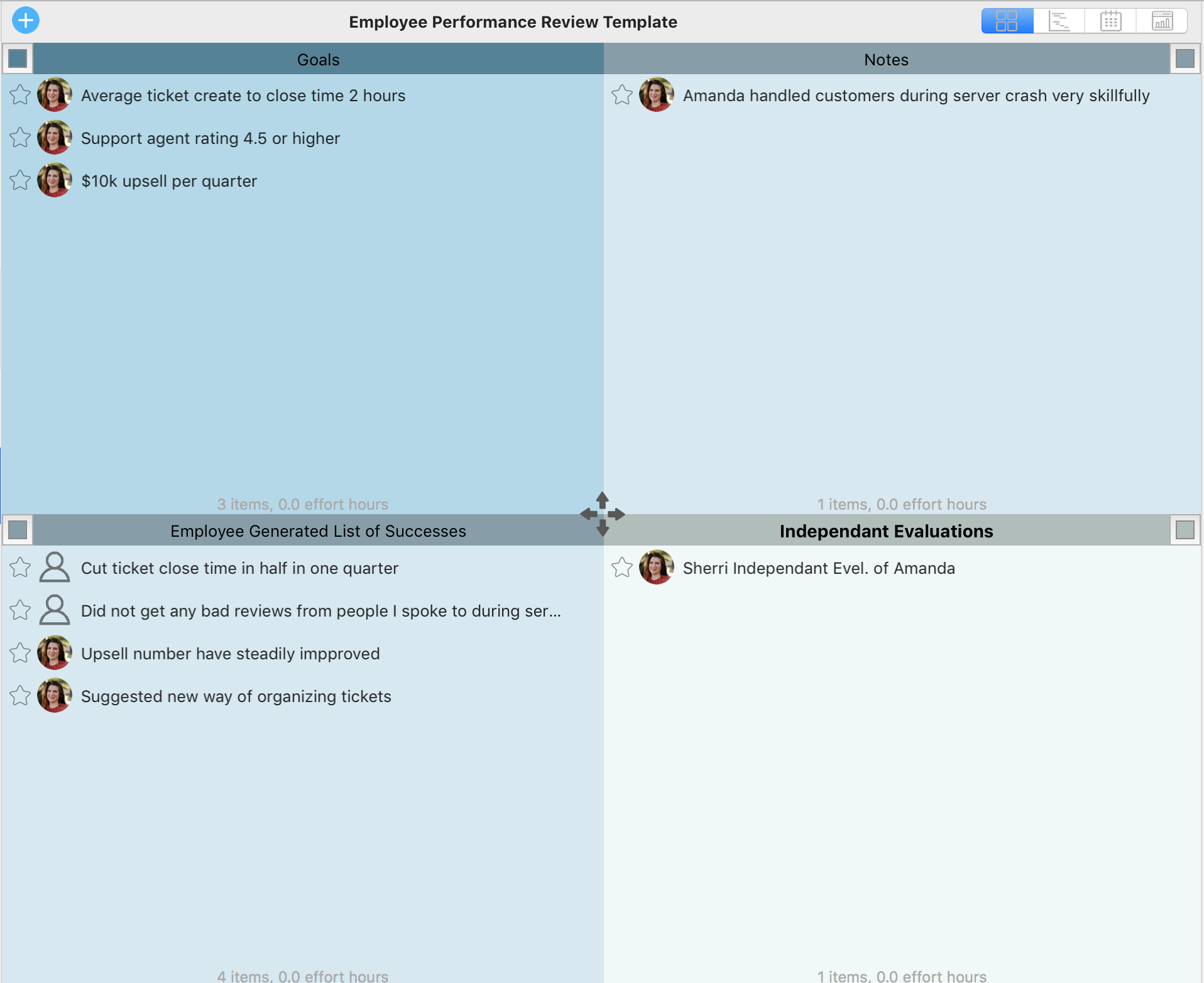Introduction
An employee performance review can trigger significant anxiety, but not only for the person being appraised. For many managers giving performance reviews are as or more unpleasant than receiving them can be for their employees. However, performance reviews are an incredible opportunity for managers to bring out the best in their employees and managers should things of them as tools that contribute greatly being able to accomplish their own goals. The performance review template is a framework that helps managers prepare throughout the year so that that when review times comes they have everything they need to provide a fair review and take full advantage of this coaching opportunity.
Employee Performance Review Template to Help with Preparation
Launch the employee performance review template here.
Managers do not just look at their calendar and, realizing that they have a performance review scheduled in the afternoon, spend a few minutes thinking about the overall quality of this particular employee. There are many aspects to consider. The employee performance review template addresses each of these aspects. When using this template in Priority Matrix, managers can create items in each quadrant and track progress throughout the year:
Quadrant One, Goals
In quadrant one, managers write down goals and objectives for the year, including timelines and milestones. As Rebecca Knight wrote for Harvard Business Review, “The performance review doesn’t start with a sit-down in the spare conference room.” Instead employees should have a clear understanding at the beginning of the year how their manager will be evaluating them at year’s end/ Dick Grote, author of How to Be Good at Performance Appraisals, advises managers to hold a performance planning session with each employee early in the year.
To learn more about creating goals for employees, check out this article about SMART Goals.
Quadrant Two, Notes
In quadrant two, managers create items to document notes throughout the year. These notes can be positive or negative, very concrete or simply an impression. The important thing is that when it comes time for a performance review, managers are able to easily find all their notes and weigh the importance of each one next to everything else. Not every note will make it into the performance review, but each will be important as managers consider how they should evaluate the past year’s performance.
Quadrant Three, Employee Generated List of Successes
Managers should ask employees for a list of their successes about two weeks before the performance review. They will then add these successes to quadrant three. This is another suggestion of Grote’s, who believes this practice casts a positive light over the experience. In addition, these lists of things that employees are proud of having accomplished provide managers with a different perspective and help them see the past year through their employee’s eyes.
Quadrant Four, Independent Evaluations
Another important aspect of preparing for performance reviews is getting feedback from others who work with the person. Regarding this part of performance review preparation, Knight feels that the more of these, the better. It may also be a good practice to get feedback from the same people throughout the year. If managers do this instead asking for blanket feedback nearing performance review time, they will be able to get more helpful context and better understand their employee’s place in team dynamics.
Conclusion
By launching an using the employee performance review template in Priority Matrix, managers can prepare for these critical opportunities, confident that they have all the necessary information.
Learn how employees can prepare for performance review with their own template, here.
